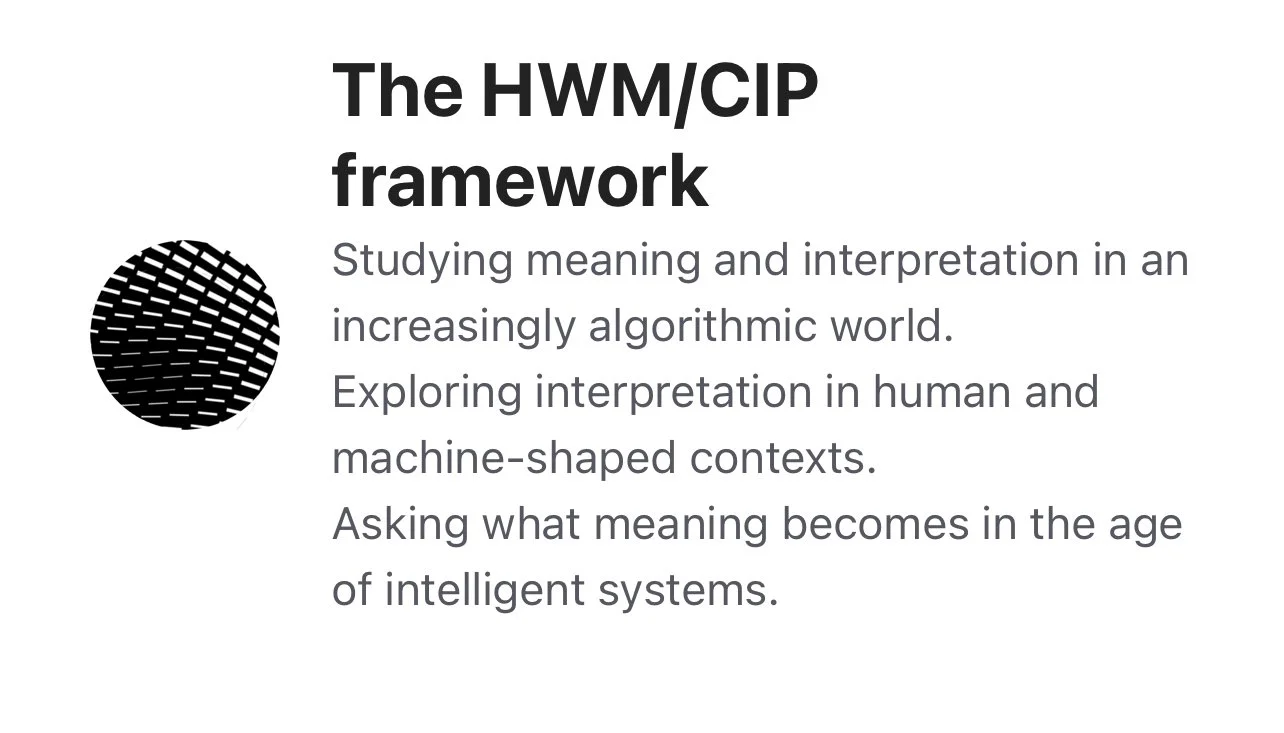Context Intelligence and the Hermeneutic Workflow Methodology: Building Meaning Infrastructure
1. The Shared Ecosystem: Context Intelligence and Knowledge Architecture
The need to systematically design the information environment around an LLM forms the core shared category. This field of practice is often referred to interchangeably as Context Intelligence or Knowledge Architecture.
- RAG as a Technical Component (Capability): Retrieval-Augmented Generation (RAG) is a key concept under the research axis Context Intelligence and Knowledge Architecture. RAG is categorized as a mechanism within this field, serving as an example of Dynamic Information Management—the automatic provision of relevant, up-to-date context (such as company-specific data) to an AI system without overwhelming it. This functionality belongs to the invisible infrastructure necessary for successful context systems, often called Context Architecture.
- HWM/CIP as a Strategic and Methodological Layer (Infrastructure): The Context Intelligence Portal (CIP) is a critical concept in modern knowledge architecture. It functions as the durable, reusable infrastructure built to capture and transfer Context Intelligence—reasoning, tone, and persuasive intent. The purpose of the entire HWM/CIP framework is to overcome context loss by designing knowledge architecture that moves beyond dependence on traditional document-based systems.
| Category / Framework | Defining Principle |
|---|---|
| Great Ape |
Context Intelligence / Knowledge Architecture The discipline of designing the information surrounding an LLM or organizational knowledge system for successful outcomes. |
| Human (HWM/CIP) | The methodology for capturing nuanced, strategic meaning and structuring it as reusable interpretive infrastructure. |
| Gorilla (RAG Platforms) | The capability for retrieving relevant documents and data efficiently (Dynamic Information Management) to ground factual answers. |
2. Distinction of Function within the Ecosystem
While both RAG and HWM/CIP belong to the same ecosystem, their roles differ.
- RAG and Retrieval: RAG-based systems focus on retrieval efficiency, making internal documents searchable and synthesizing answers from that data. This solves the problem of retrieving relevant information.
- HWM/CIP and Interpretation: The HWM/CIP framework deals with a deeper problem—codifying the logic behind the documents and the interpretive reasoning that gives them meaning. Sources note that CIP couples context-architecture technology (including RAG) with a hermeneutic or interpretive discipline.
The relationship can be described as: Context Architecture (goal), which uses RAG (retrieval tool), strengthened by HWM/CIP (strategic methodology) to ensure systems understand intended meaning and perspective. The HWM component is indispensable because no platform can replace the interpretive rigor needed to build a genuine portal of intelligence.
Powerful retrieval tools do not automatically create a portal of intelligence. That requires the structured interpretive commitment embodied by HWM. Conventional platforms, even robust ones like TextFlow, lack the interpretive layer that prevents context loss before production begins. The CIP provides that layer. RAG retrieves documents; CIP and HWM define their meaning and intent.
This analogy frames RAG and HWM/CIP as distinct but symbiotic forces within a single domain: Context Intelligence and Knowledge Architecture.
3. The Human Core: Why HWM Rejects Traditional KM Systems
Traditional KM systems fail because they are built to be resisted. They are top-down mandates that try to force “sustained engagement” from employees who have no real stake in the process. Senior management’s enthusiasm fades as the work gets delegated to people who lack both the authority and the wisdom to make it meaningful.
The HWM framework rejects this model outright. It exists for the leaders who already know the labor of endless correction cycles firsthand and see the 200-hour semantic apprenticeship as liberation, not drudgery.
Delegating semantic apprenticeship to someone detached from the brand’s lived reasoning guarantees failure. The intern might deliver flawless episteme (theoretical knowledge) and technē (technical skill) while missing the phronēsis (practical wisdom) that keeps the business coherent. The founder would get a perfect record of everything except the irreplaceable why that drives the enterprise.
When the process works, it’s because leadership recognizes and elevates genuine phronetic expertise—like involving a subject matter expert who actually understands the domain from the inside.
The HWM/CIP framework is therefore a self-selecting filter. It’s for the leader or founder who has grown tired of context collapse and understands that real structure requires real engagement.
4. Personal Reflection: From Theory to Practice
In my own early experiment with HWM, the entire concept of a contextual framework emerged through roughly 300 hours of iterative work—training off-the-shelf LLM applications on my own business. Half of the knowledge came from building an ordinary-level knowledge base in tools like NotebookLM. The other half came through months of hermeneutic back-and-forth—refining, correcting, reinterpreting, and clarifying what defines our business, our tone, and our position in the market. That recursive interpretive process became the prototype of a working Hermeneutic Workflow Methodology.

